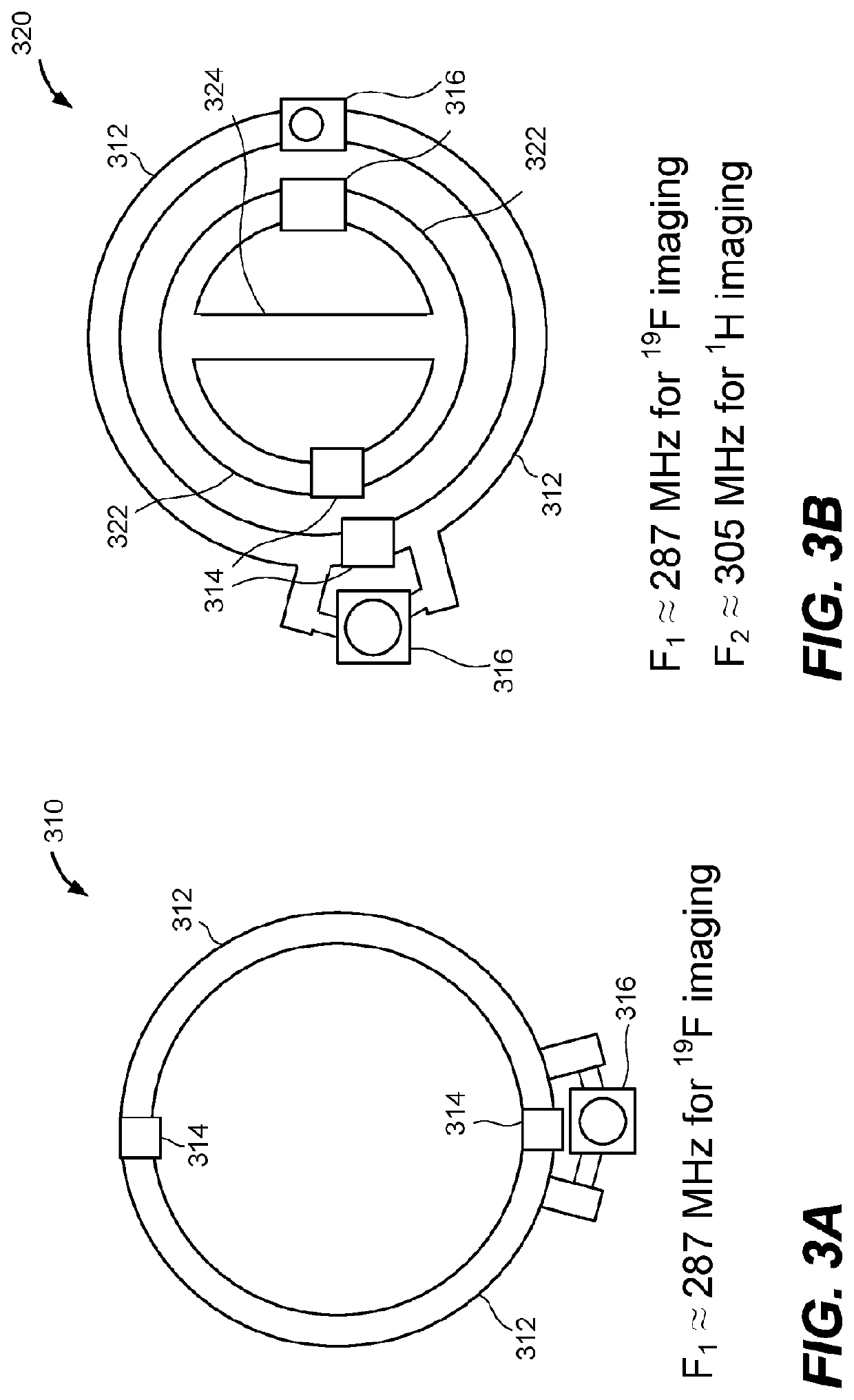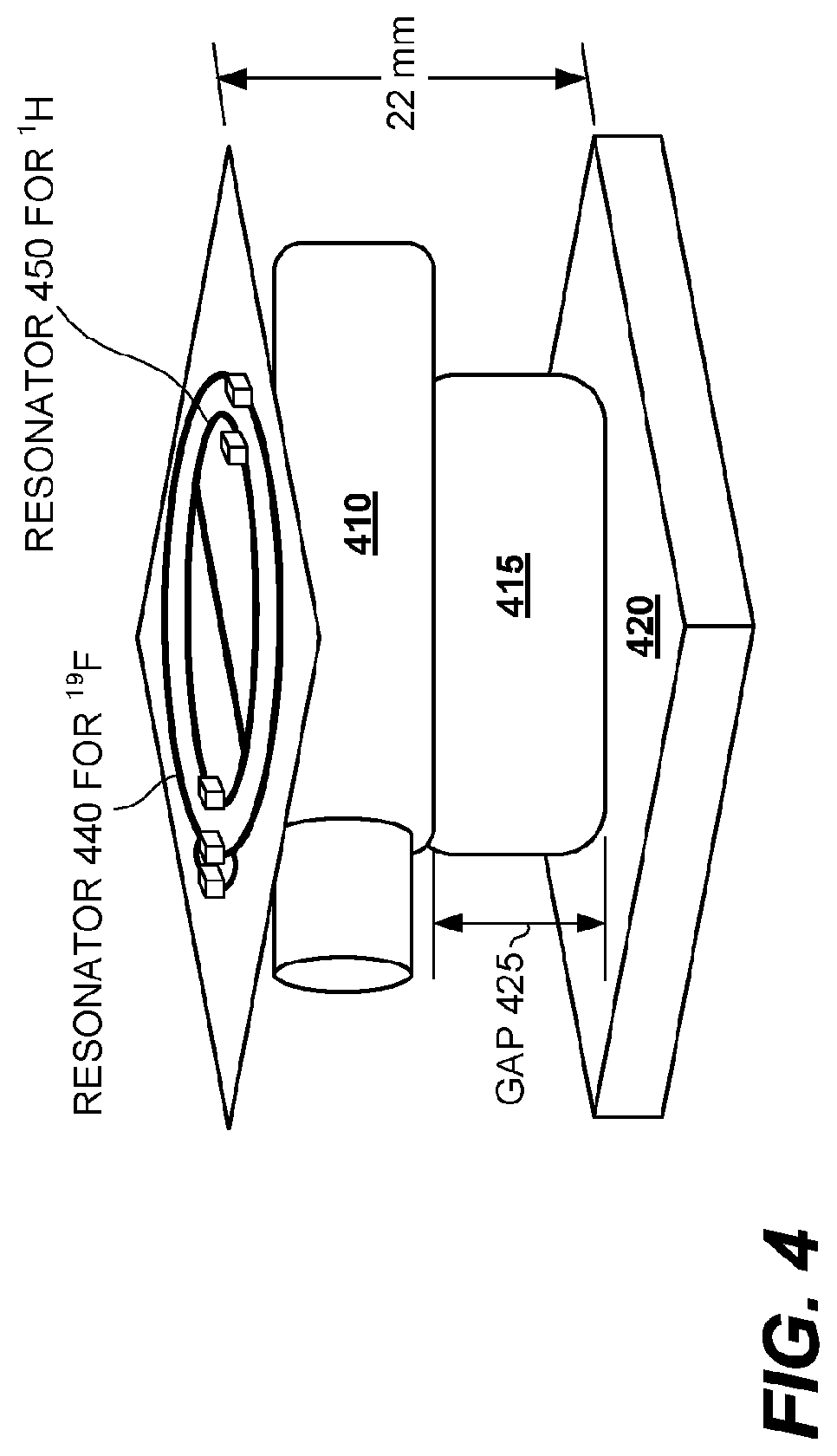RF magnetic field homogeneity and magnetic resonance image uniformity using inductive coupling
a magnetic field and inductive coupling technology, applied in the field of improving magnetic resonance imaging quality, can solve the problems of poor coupling between primary transmit antenna and secondary resonator, affecting the resonant frequency of secondary resonators, and interference can be subject to spatial effects, so as to improve image quality and improve field uniformity
- Summary
- Abstract
- Description
- Claims
- Application Information
AI Technical Summary
Benefits of technology
Problems solved by technology
Method used
Image
Examples
example symmetry
Considerations
[0114]FIGS. 6A-6B show different symmetry relationships between primary and secondary magnetic fields. For clarity of illustration, FIGS. 6-7 show the shapes of transmit antennas and secondary resonators in oblique view; details such as discrete components, adjustable components, or numbers of loops have been omitted.
[0115]FIG. 6A shows an MRI configuration in which primary transmit antenna 660 and secondary resonator 610 are both nominally circular, with a common axis of symmetry 605, and are situated on opposite sides of a sample volume 650. In such a configuration, antenna 660 generates a primary magnetic field 662 shown by solid lines. The changing magnetic flux through the secondary resonator 610 generates a secondary magnetic field 612 as shown by dashed lines, when the secondary resonator 610 is tuned as disclosed herein. In this configuration, the primary component of the RF magnetic field in the sample volume is parallel to the axis 605.
[0116]FIG. 6B shows an ...
example method
[0137]Because of loading, it can be desirable to tune the resonant frequency of a secondary resonator prior to imaging, to provide a substantially optimized shimming of the RF magnetic field, to increase signal to noise ratio and reduce standard deviation of imaging sensitivity across a region of interest of a sample within the MRI system's sample volume.
[0138]FIG. 10 describes an example method. At process block 1010, a secondary resonator, which can be similar to one of the passive circuits described herein, is tuned to a first resonant frequency while situated in an operating environment, near to a sample in the sample volume of an MRI system. For imaging a first nuclide (e.g. 19F) at a first operating frequency of the MRI system, the first resonant frequency is above the first operating frequency, and below a second operating frequency of the MRI system. At process block 1020, MRI signals are acquired at the first operating frequency.
[0139]In some embodiments, the method can be ...
example mri
[0146]FIG. 13 shows an example MRI machine 1300 incorporating the disclosed technology. The MRI machine 1300 incorporates a system 1200 as described above, incorporating two transmit antennas and at least one secondary resonator about a sample volume 1250 of the MRI machine 1300. MRI machine 1300 can additionally incorporate other components and subsystems, including one or more of: main field magnet 1314 and power supply 1316; gradient field magnets 1324 and power supply 1326; RF magnet power supply 1336; controller 1370; power subsystem 1381; or mechanical subsystem 1383. The mechanical subsystem can include one or more of: a translation stage, a sample container, or a belt or clamp to fasten a sample within sample volume 1250. The MRI machine 1300 can further include a computing node 1375, incorporating one or more processors with memory coupled thereto, and operable to acquire first MRI signals of a first nuclide at a first operating frequency and to acquire second MRI si...
PUM
 Login to View More
Login to View More Abstract
Description
Claims
Application Information
 Login to View More
Login to View More - R&D
- Intellectual Property
- Life Sciences
- Materials
- Tech Scout
- Unparalleled Data Quality
- Higher Quality Content
- 60% Fewer Hallucinations
Browse by: Latest US Patents, China's latest patents, Technical Efficacy Thesaurus, Application Domain, Technology Topic, Popular Technical Reports.
© 2025 PatSnap. All rights reserved.Legal|Privacy policy|Modern Slavery Act Transparency Statement|Sitemap|About US| Contact US: help@patsnap.com



